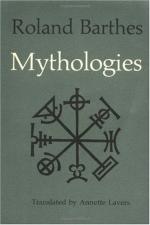|
This section contains 370 words (approx. 1 page at 400 words per page) |

|
Section 1, Part 13 Summary and Analysis
"The Lady of the Camellias" This essay examines the mythic resonances of a famous French story, The Lady of the Camellias (originally a play, rewritten in English as Camille, and known internationally as the opera La Traviata). The story is that of a courtesan or high-class prostitute, Marguerite, who falls terminally ill with tuberculosis but refuses to tell her lover, Armande, for fear of humiliating him. Armande eventually finds out the truth, professes his love and vows to help her, but too late—Marguerite dies in his arms.
The author defines the two central characters as experiencing love in very different ways, suggesting that Marguerite expresses hers in the hope of being recognized and loved in return, while Armande, expresses his in what the author describes as terms of working class sentimentality - romantic, passionate, selfless, idealized. The...
(read more from the Section 1, Part 13 Summary)
|
This section contains 370 words (approx. 1 page at 400 words per page) |

|




